Oros is a tile placement, worker placement game of making mountains to study, worship, and gain experience from their workers. The game is a giant puzzle of plate tectonics that each player can control and shift the tiles placed on the board. The game is designed by Brandt Brinkeroff, and is published by Aesc Games and brought to the USA by Lucky Duck Games. It’s for 1-4 players and takes about 1.5/2 hours to play. The game stretches your mind on how tiles can move compared to most other tile placement games out on the market. Originally crowdfunded on kickstarter, it is now available for purchase through many avenues.
What’s in the Box?
- 1 Map
- 4 Double-sided player mats
- 1 Ascension track
- 4 Demigod standees
- 72 Land tiles
- 32 Followers
- 32 Wisdom caps
- 48 Volcanoes
- 36 Sacred site tiles
- 1 Jade jaguar
- 24 Foresight tokens
- 1 Scorepad
- 48 Automa cards
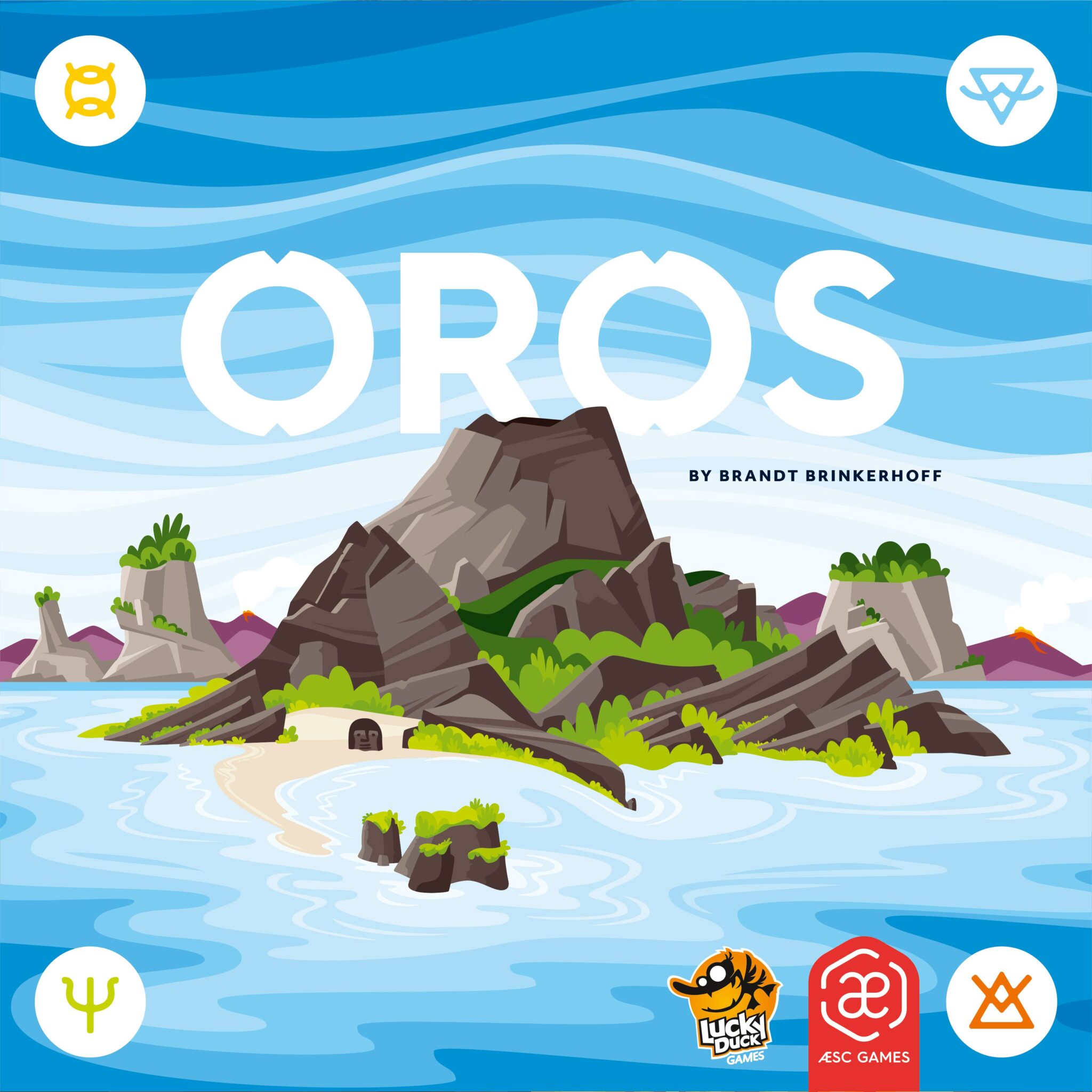
How’s It Play?
Played in a clockwise direction, players take 3 actions on their turn. Players move their followers on their player board to an unoccupied space to take that listed action. Each action can be upgraded to become more powerful as the game goes on, and players individually choose which ones they want to upgrade and in what order.
Player are trying to gain the most points by building sacred sites on mountains, by developing their abilities, and by improving the value of their sacred sites. To do this players adjust the map by moving tiles into other tiles and making mountains, then moving their followers onto those mountains and building a sacred site. The sacred sites allow players to advance on the ascension track and gain ways to upgrade their actions.
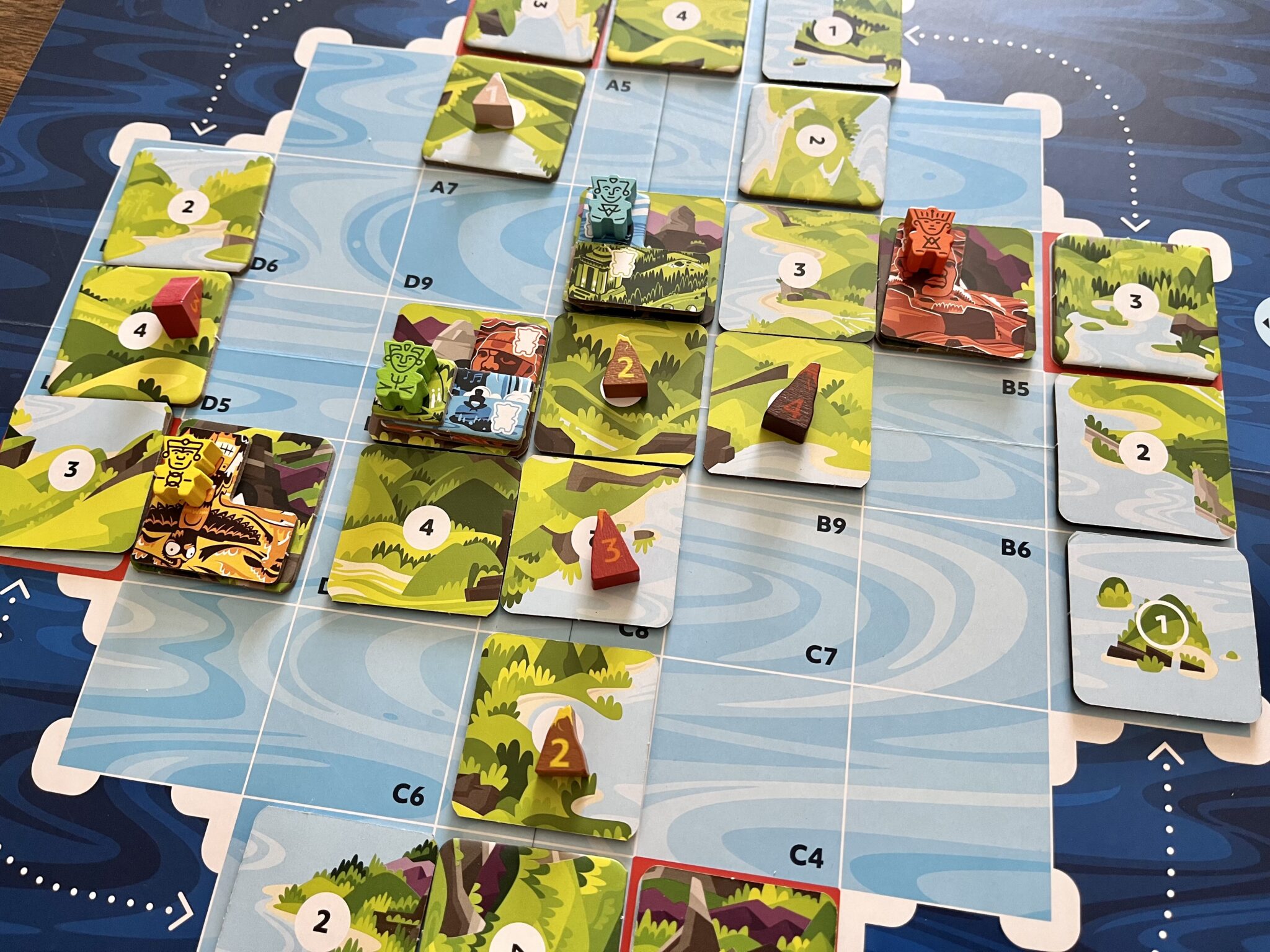
Oros ends when a player gets to the top space of the ascension track, and scoring is performed counting up points from their position on the ascension track, unlocked abilities they have done during the game, by having their followers studying, and by the number of built sacred tiles. The player with the most points wins the game.
To better understand this game, you need to understand what actions you can perform, and how tiles get smashed into each other to change. Each tile has a land mass number associated with it, and when a tile is moved onto a location of another, their values are added up. The highest tile is a 4, and if there is a higher value, it becomes a volcano that will spread lava in the current player’s choice of direction when activated. This increases the land mass even more. When two different 4 tiles smash into each other, a mountain is formed and players can build their sacred sites on those tiles. The first player to do so places their 3 size sacred site, then next player places their 2 size sacred site tile, and the third places their 1 size sacred tile.
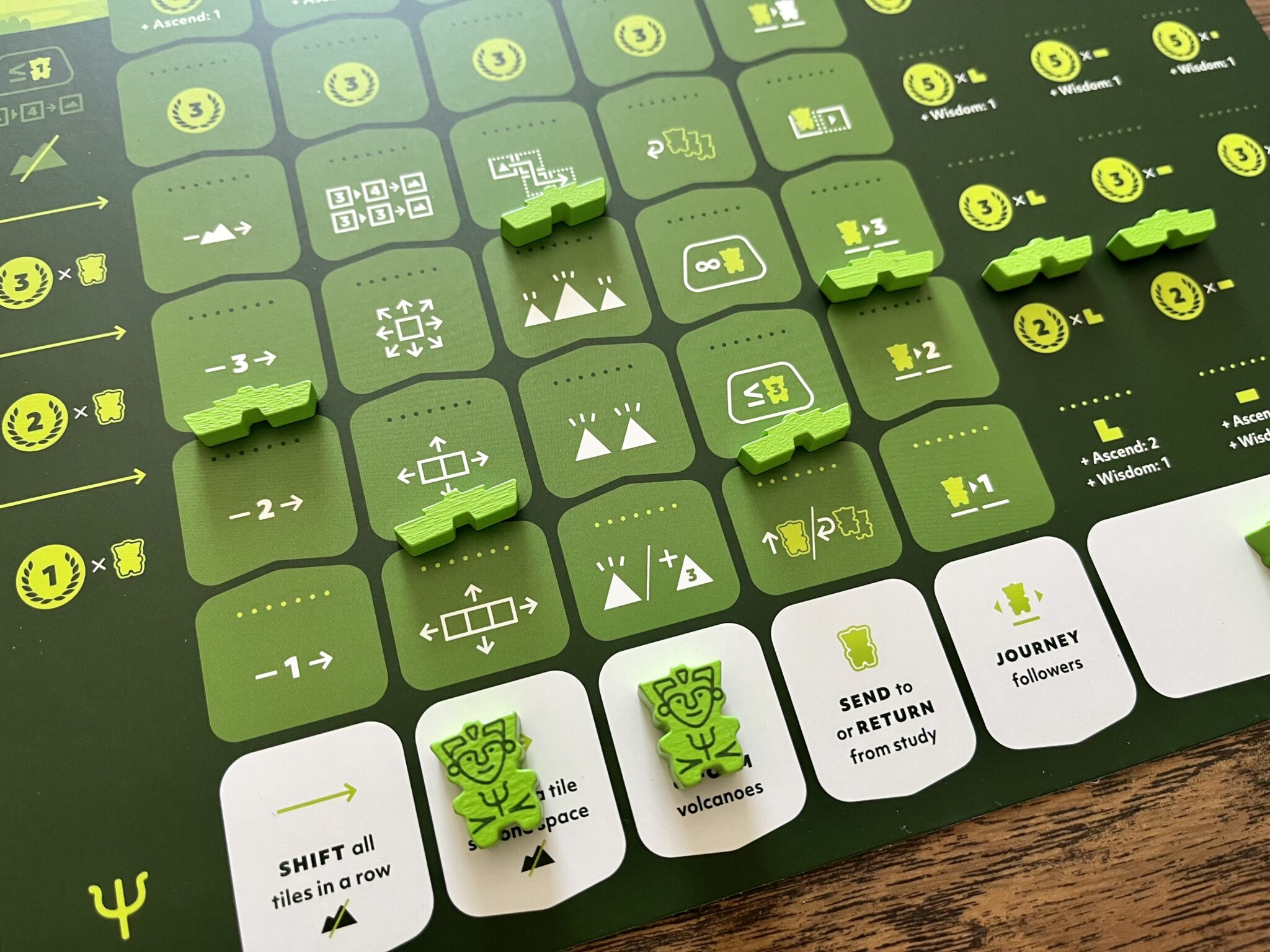
When tiles are moved off the board, they wrap around and come back in on the other side of the board. Additionally, the outside tiles even wrap around to form a circle-like orientation, so when they move they follow the lines on the board. This makes it so no tile can get bumped off the board; when it moves, it will move somewhere. I’m not going to go into the specifics of how the tiles move, as its one of the harder things to understand in the game, but just know every tile, when moved, is never removed from the board and can be pushed in very interesting ways to do what you might want to do in the game.
Each action allows points to be scored when upgrading them to the highest point.
Action 1 – Shift all tiles in a row
This allows you to shift tiles either vertically or horizontally. This action can’t be used to shift mountains. Because all the tiles in its row all shift, there can never be a collision when performing this action. When this action is upgraded you will be able to shift tiles 2, or 3 spaces, or eventually gaining the ability to shift mountains.
Action 2 – Move a tile set one space
This moves a set of tiles exactly one space. Depending on how much you have upgraded this action, you start by moving a group of 3, but can eventually move one tiles on their own, and eventually using 3 tiles as if they were 4 tiles. This is a great action to use to collide tiles together forming a higher number tile. Whenever tiles have a greater value than 4, the excess is placed with a volcano token that eventually erupts and displaces its unit listed on it in land elsewhere.
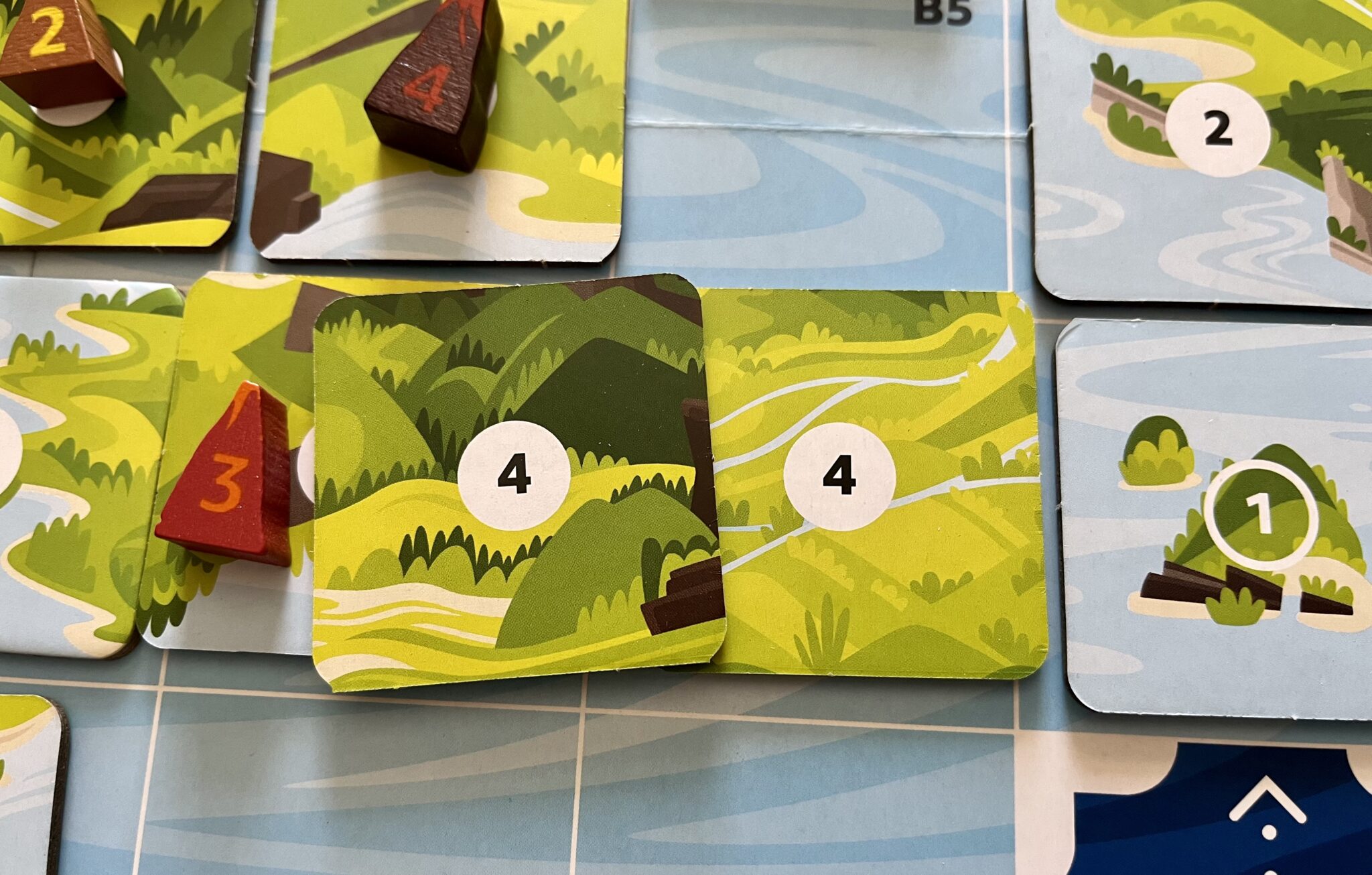
Action 3 – Erupt or form volcanoes
Volcanoes erupt in a straight line, and an eruption can be divided to flow in more than one direction. The lava cannot change course or zigzag around the map until you gain that ability to do so. When it hits another tile under size 4, its value is added up and the tile is changed to the new unit size. When upgrading this action you will eventually be able to erupt up to 3 volcanoes with one action.
Action 4 – Send to or return from studying
This action lets you place one of your followers to the study section on your player board or on the map. When returning from the study they bring wisdom with them and allow you to immediately improve and upgrade your abilities. When this action is upgraded it allows you to have more followers on the map. At the end of the game you also score points for the number of followers who are studying.
Action 5 – Journey Followers
This is how you move your followers on the map to get to a mountain to build a sacred site. You cannot move diagonally nor can you end your movement on a tile with someone else’s follower, but you can move through them. Each sacred site is an additional space on the mountain tile to move on. Followers can move top and down these like a staircase.
Action 6 – Build one sacred site
This needs to be built on a mountain tile with one of your followers on it, and each mountain can only hold one of each size sacred site. The sequence needs to be built with the size 3 first, then size 2, then size one. When building a sacred sites, players ascend on the ascension track, and gain wisdom to upgrade actions.
Player have 3 actions per turn and will be moving their followers around their player board to empty action spots to perform those actions.
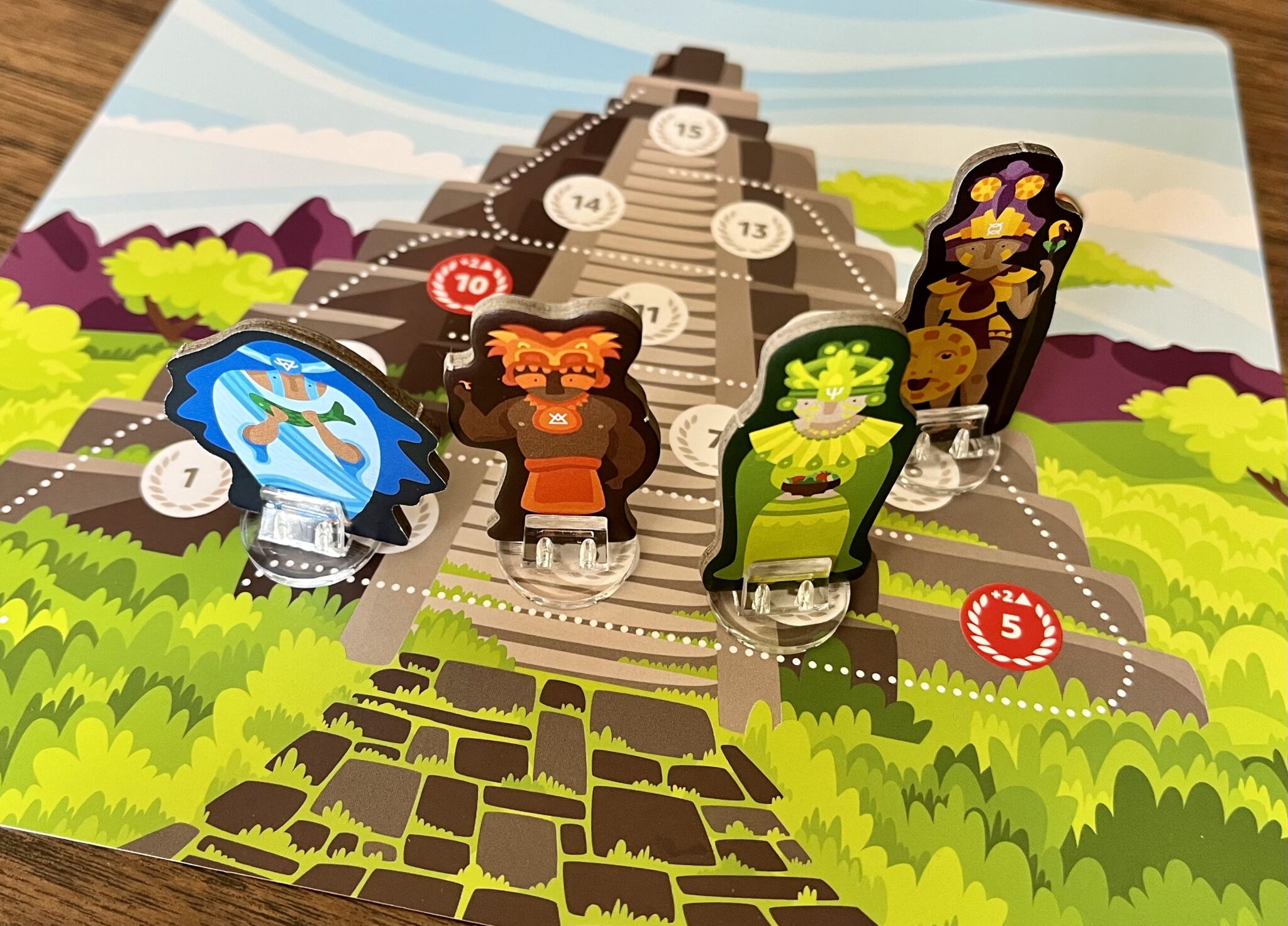
There are various advanced game variants included in the rulebook to change things up and make the game even more complicated. After players get to know the base game, add some of these new variants in to change the game a bit and keep it from becoming stale.
The Verdict
This game changes how players need to think of the board. It’s no longer a flat and easy to see board that you manipulate. Now, it’s a game with opportunities where tiles collide, move from one side to the other, and even wrap around. Players see exciting moves that another player most likely didn’t see, causing a lot of upheaval, sometimes quite literally. Players need to stretch their mind as to how the tiles can move and do what they want them to do.
Oros is hard to understand conceptually, but when the rules are explained, and placed together so players can see the progression of things, it doesn’t seem too hard to play. The rulebook does a good job with examples and explaining the game without confusion, and many other video reviews have added insight into this as well.
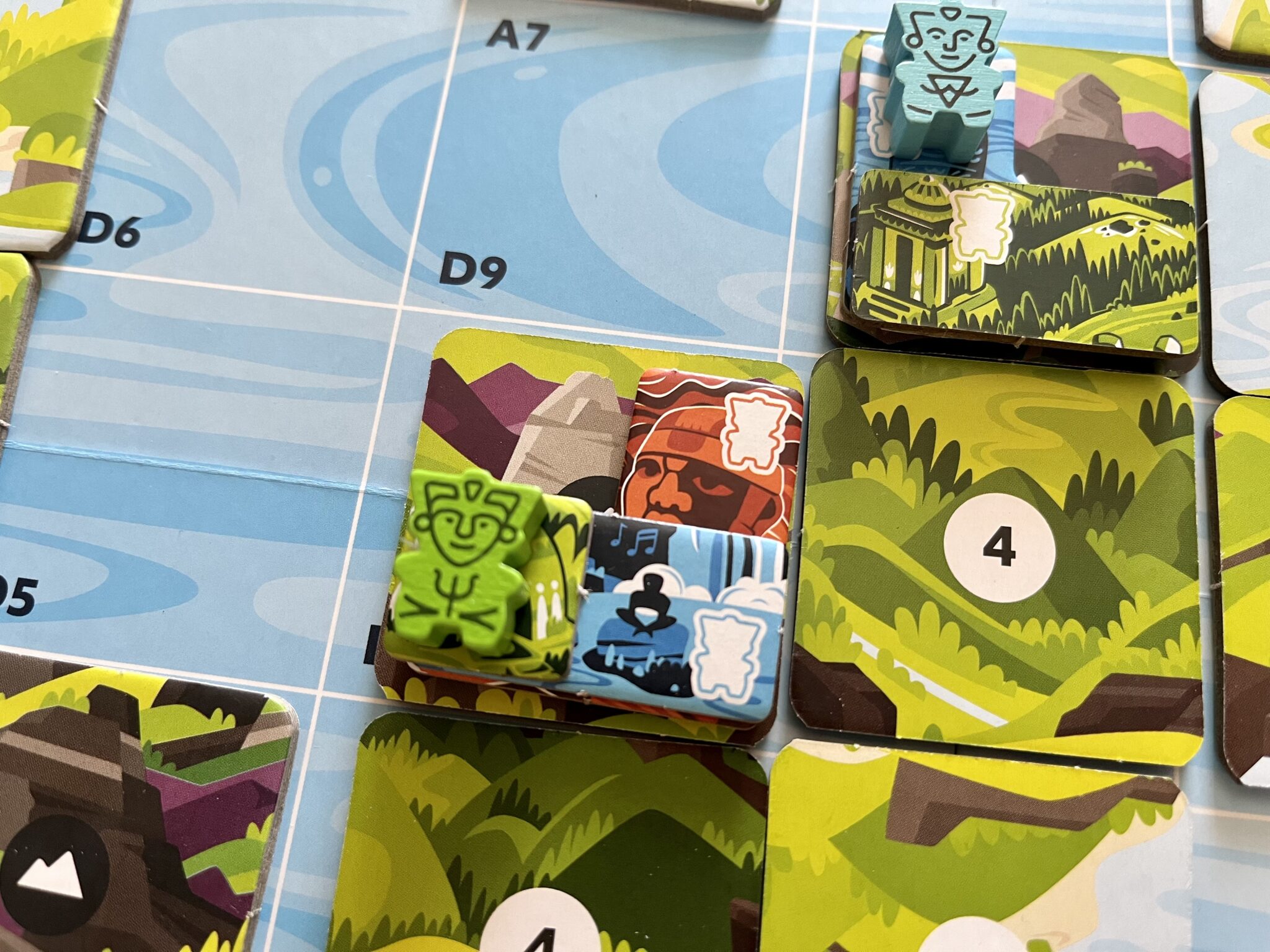
Oros ultimately is a nice puzzle that players are trying to wrap their heads around, even as other players are changing the landscape of that puzzle. Due to how the game is, this feels like a game that needs to be played multiple times to really grasp and excel at. This is not a one and done game, but the enjoyment increases with plays, and is most enjoyed after 3-4 full play throughs.
Experienced players have a huge advantage when playing with newer players, but if you play with the right experienced players who mostly want to have fun, they can show you some big cool moves near the beginning of the game to expand your mind. If done correctly, you will hopefully be able to catch up to them with some of their help.
The production and components of Oros adds to give your experience a more tactile and fun feel. You will be stacking your sacred sites on each others, placing out volcanoes, and moving lots and lots of tiles around the board, growing the land.
Oros has a strategy focused on how you upgrade your actions and in what order you do that. There are several ways the game can be won, but it takes a while to figure out all the possibilities, as players tend to be a little closed minded on their turns, and players tend to take similar routes to victory at first. You will most likely be thinking about the game after playing it and think of some other strategies that you can try in future games.
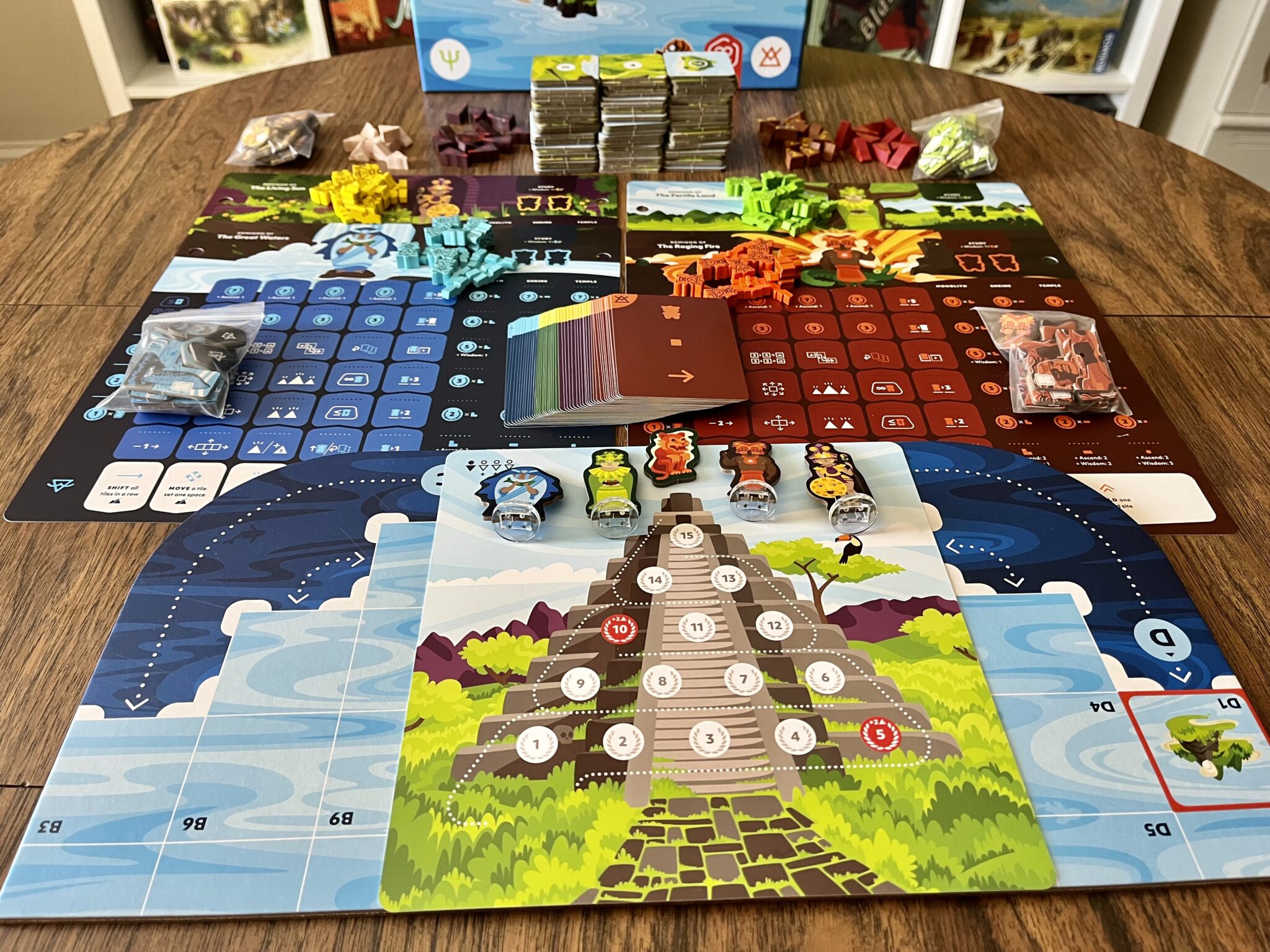
Lastly, this is not a casual game that you want to just pull out and play with someone who has never played a modern board game. It would be a good game for those who want to take the next step to a more complex game, or for those who enjoy medium complexity games to play with their experienced game group. I enjoyed the game myself, I didn’t even try to play it with my kids (aged 7 and 5), as they wouldn’t be able to stretch their minds with all the possible moves on the table that would lead a player to victory.
You can pick up Oros from the Lucky Duck shop or your FLGS at an MSRP of $50.00, or the full Kickstarter edition straight from Aesc Games for $95.00.
Images via Lucky Duck Games
Have strong thoughts about this piece you need to share? Or maybe there’s something else on your mind you’re wanting to talk about with fellow Fandomentals? Head on over to our Community server to join in the conversation!

